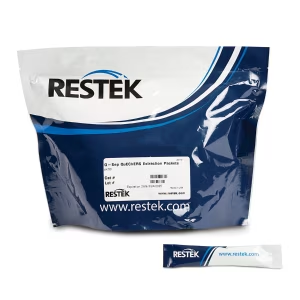
Product Description
Technical specifications
QuEChERS process
-
Extraction:The homogenized sample is combined with an organic solvent (like acetonitrile) and a set of extraction salts. The mixture is shaken vigorously, causing the analytes to partition from the sample into the solvent.
-
Cleanup:The liquid extract (supernatant) is then transferred to a tube containing various sorbents and is shaken or vortexed to remove interferences. Common sorbents include:
- Magnesium sulfate (
): Removes excess water.MgSO4cap M g cap S cap O sub 4𝑀𝑔𝑆𝑂4
- Primary and secondary amine (PSA): Removes organic acids, sugars, and some pigments.
- C18-EC: Removes non-polar compounds.
- Graphitized carbon black (GCB): Removes pigments, sterols, and some non-polar compounds.
- Magnesium sulfate (
-
Final analysis:After a final centrifugation step, the cleaned-up supernatant is ready for analysis using techniques like GC or HPLC.
-
QuEChERS SPE Tubes for Pesticide Residue AnalysisMgSO4 removes excess water. PSA* removes sugars, fatty acids, organic acids, and anthocyanine pigments. C18 removes nonpolar inter...Thames Restek
Benefits of QuEChERS
- Quick: Significantly reduces the time needed for sample preparation.
- Easy: Simplifies the process, often without the need for specialized glassware.
- Cheap: Requires less solvent and is more cost-effective than traditional methods.
- Effective: Achieves high recovery rates for many analytes.
- Rugged and Safe: It is a robust method that uses less hazardous solvents compared to older techniques.